Piano technique
Piano octave exercises for small hands
Performing double octaves on the piano is a challenging task, particularly if your hands are small. To help you develop a comfortable and accurate octave technique, I would like to give away two short octave etudes (completely free) in today’s article.
All etudes are written with young students in mind but can easily be learned by older pianists as well. The ‘Little kangaroo’ is written for learning octaves in the right hand, while the ‘Big kangaroo’ is written for the left hand. I have written three difficulty levels for each etude (easy, intermediate and advanced). All exercises aim to assist pianists with small hands to acquire a healthy octave technique.
Octave technique etudes/exercises
You might be surprised that the etudes below are written in two sets, one in an interval of a sixth while the other in an octave.
The idea behind this is that even for smaller hands, an interval of a sixth can be easily performed and used to develop a comfortable movement and hand position. The technique acquired this way can be transferred to an interval of an octave interval later on.
Performance suggestions
After the etudes are learned well, it is possible to use alternative fingering of 1-4 and 1-3 consistently throughout the sixth and octave exercises, depending on the hand size.
Go back and forth between different versions and observe the level of comfort and hand position. When playing octaves, try to notice the differences in hand position and type of movement. Copy/mimic the comfortable aspects of the sixth’s version into the octave exercises.
The tempo can be kept slow in the early stages of learning, but to learn a good octave movement, I suggest aiming at around 96BMP per each crochet/quarter note.
‘Little kangaroo’ – right-hand sixths exercise
In the exercise below, the left hand was written in a simple manner to not to distract the student from the main focus of the etude. The three etudes presented here are best suited for small hands.

The intermediate version of the ‘Little kangaroo’ (see below) increases the frequency of octaves.
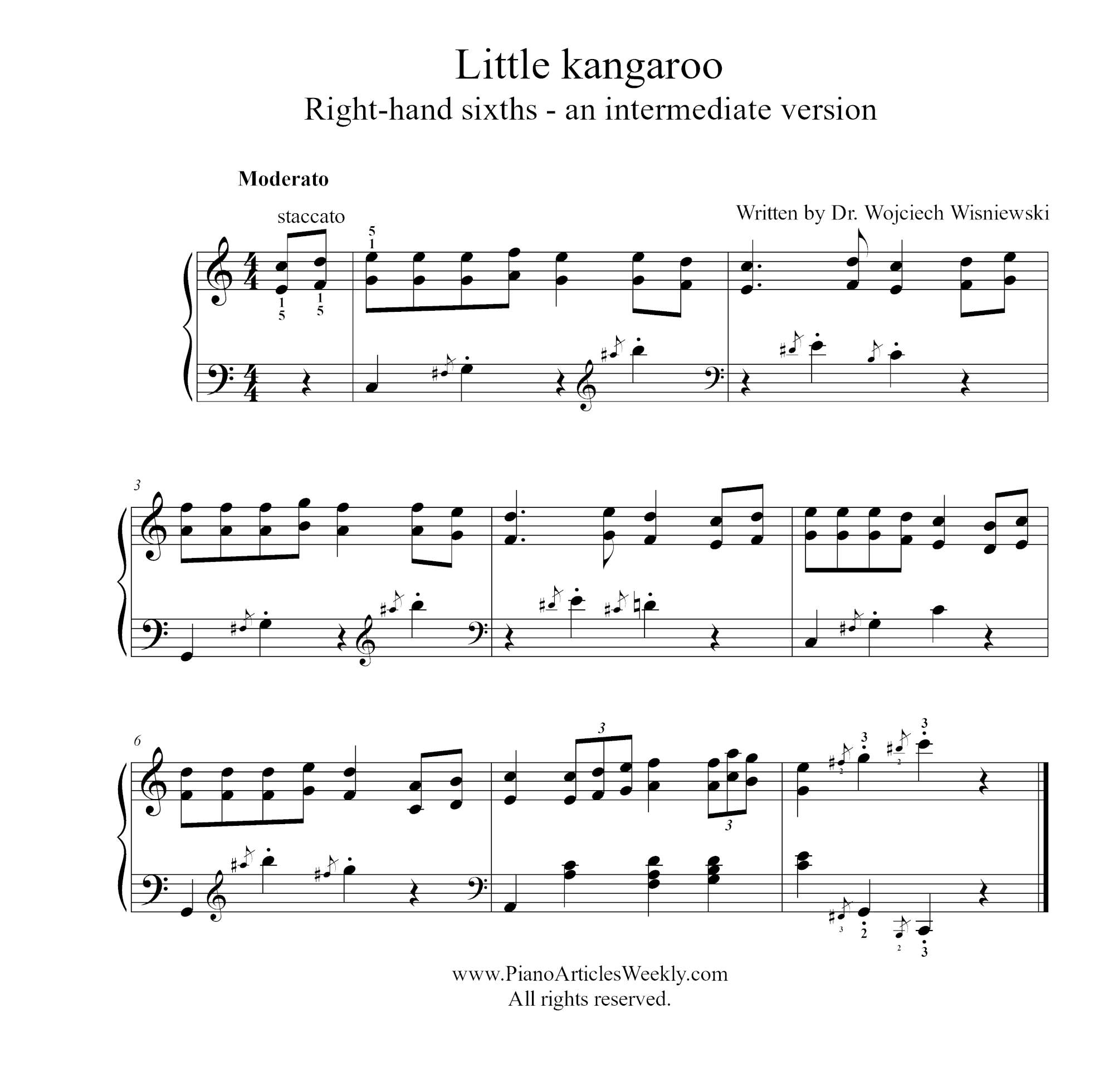
The advanced version of the ‘Little kangaroo’ (see below) increases the speed of right-hand octaves.

‘Little kangaroo’ – right-hand octave technique exercises
The three following etudes use the same musical material as the exercises shown earlier. The only difference lies in the use of octaves instead of sixths. The difficulty (intermediate and advanced) increases with an introduction of more frequent use of octaves and then with an increase in their speed.
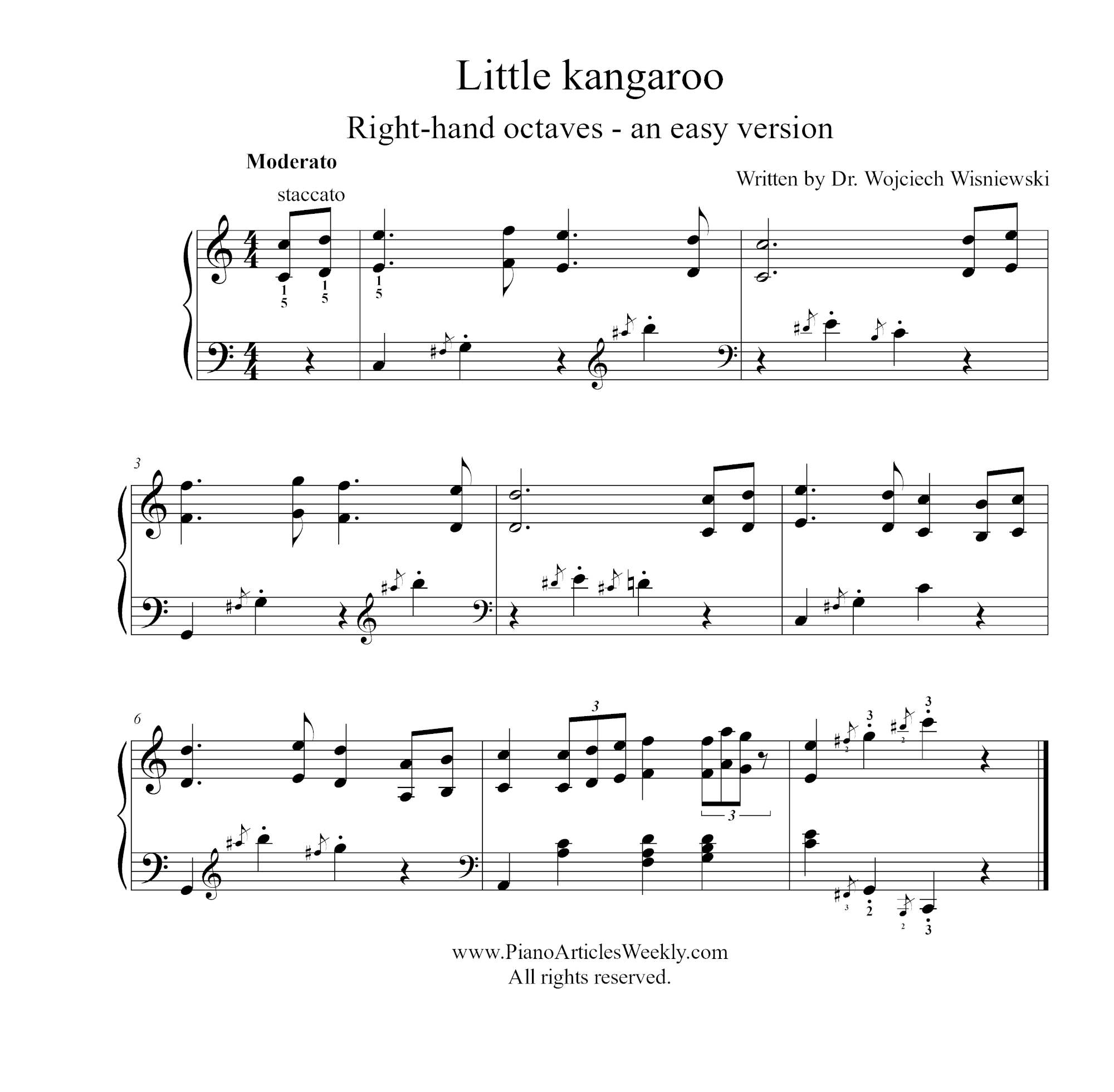
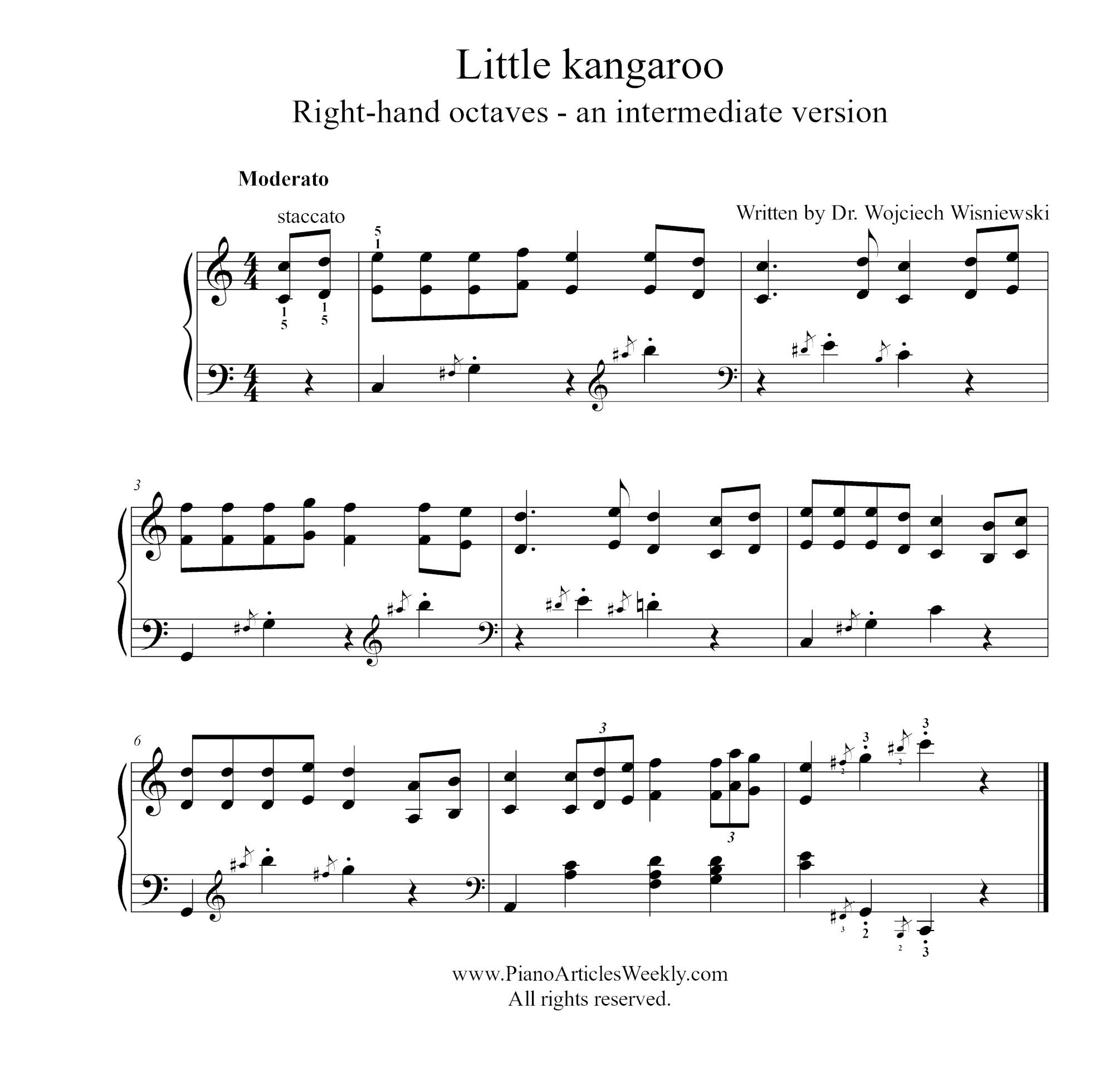
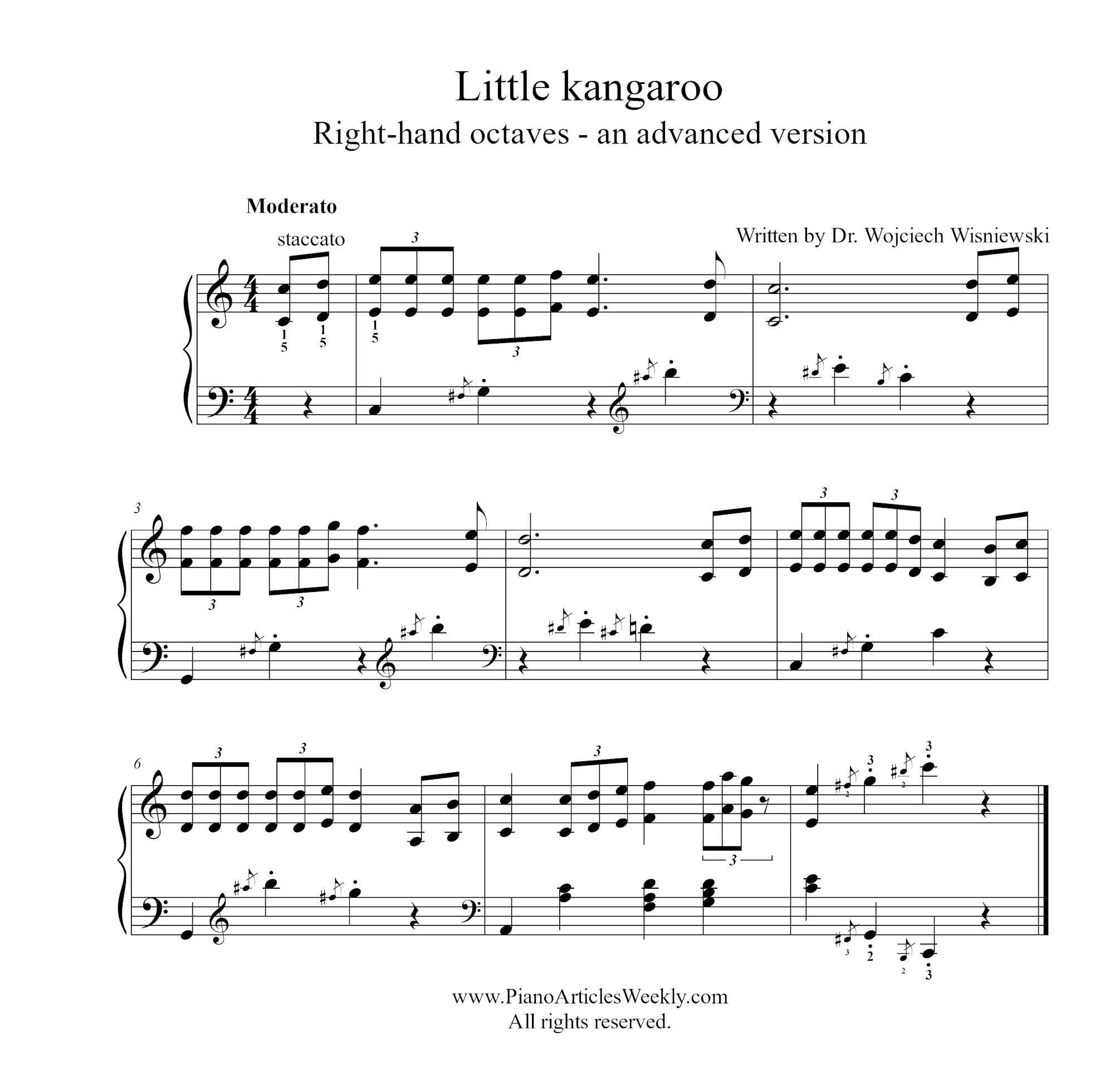
‘Big kangaroo’ – left-hand sixths exercise
The following etudes provide study material for the development of the octave technique for the left hand. To achieve this goal, I moved the melodic content to the left hand and adjusted the right hand to compliment the joyful character of the etude.
The three etudes below are suitable for small hands as they are written in the interval of a sixth.
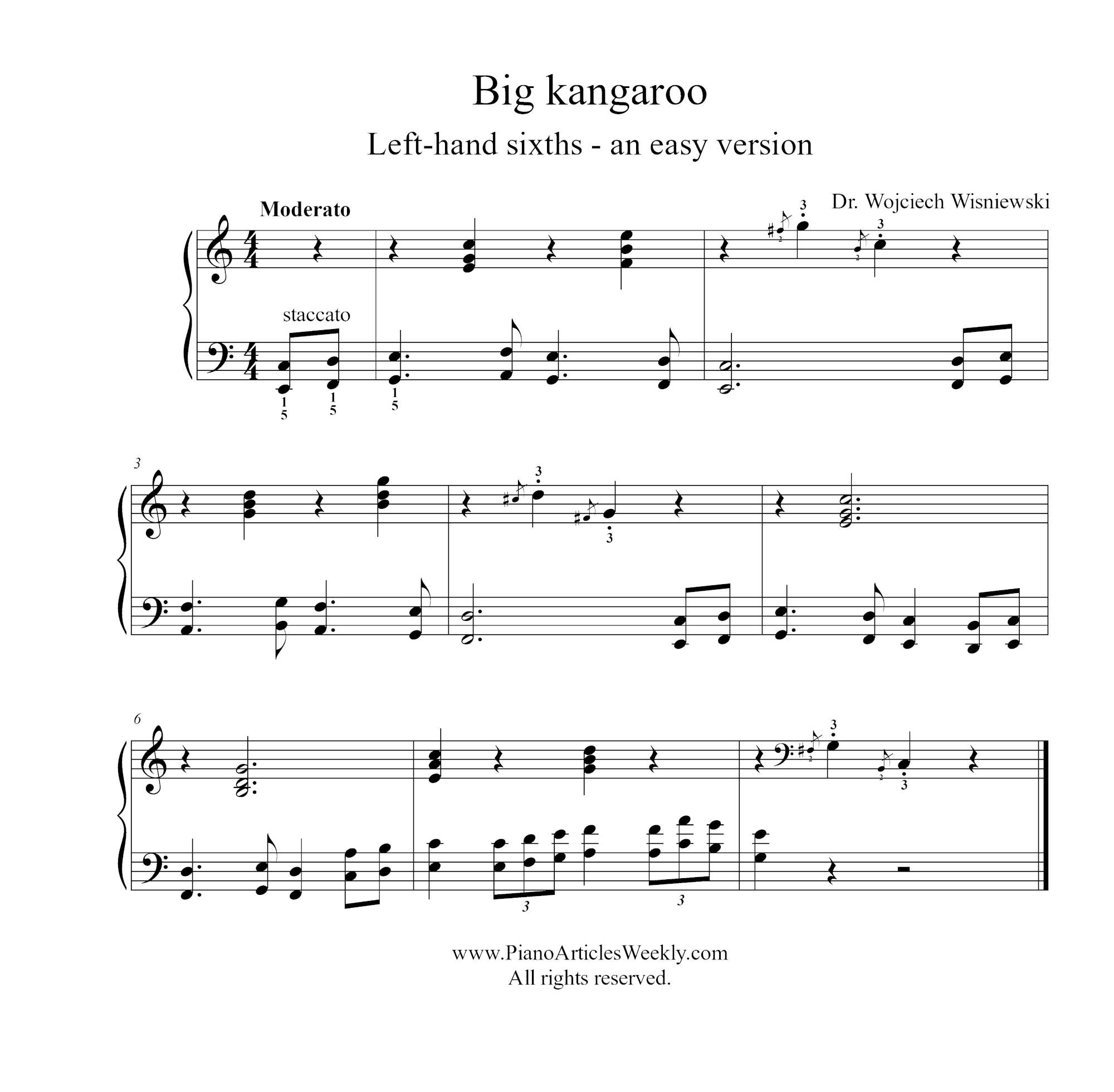
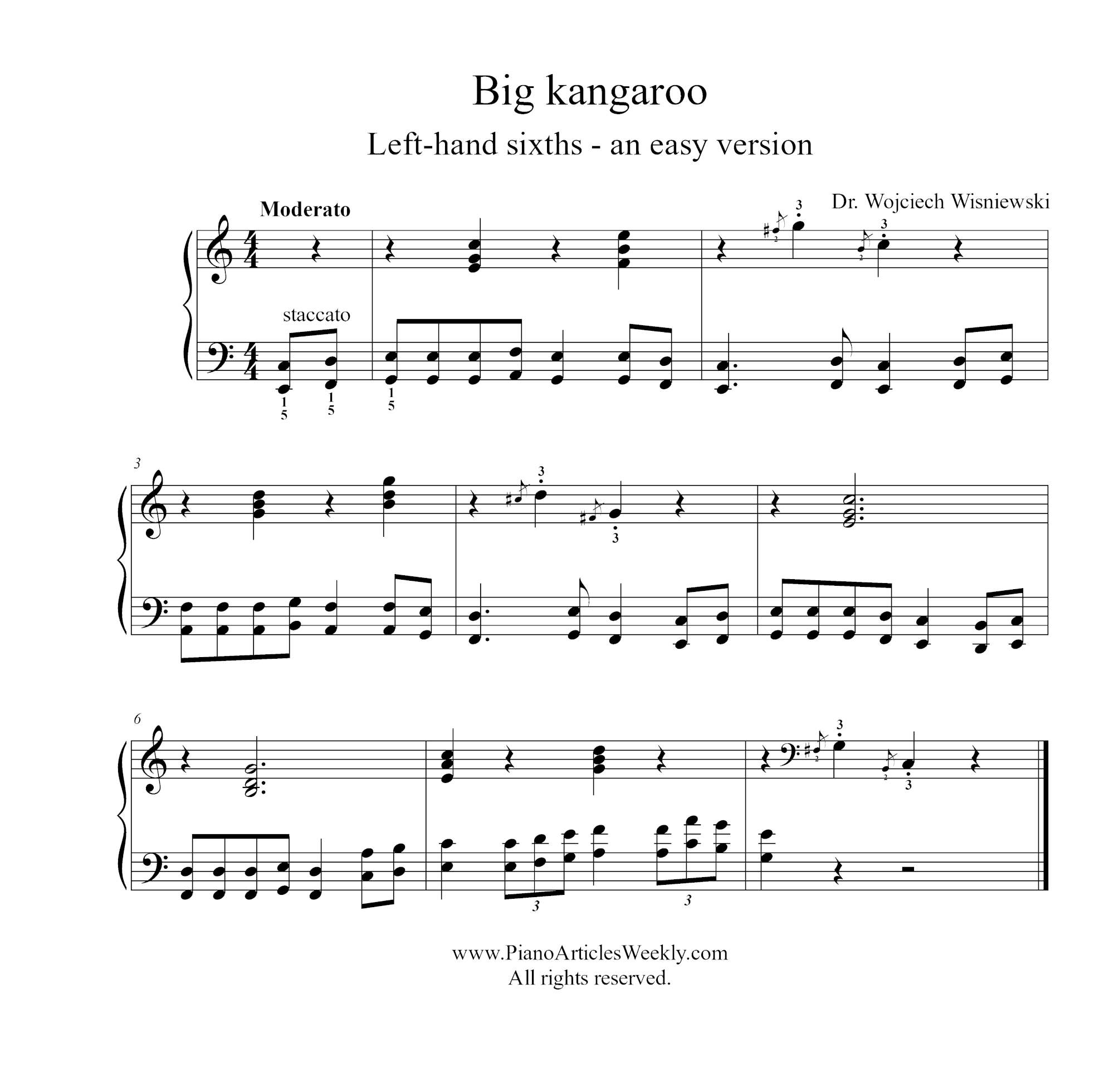
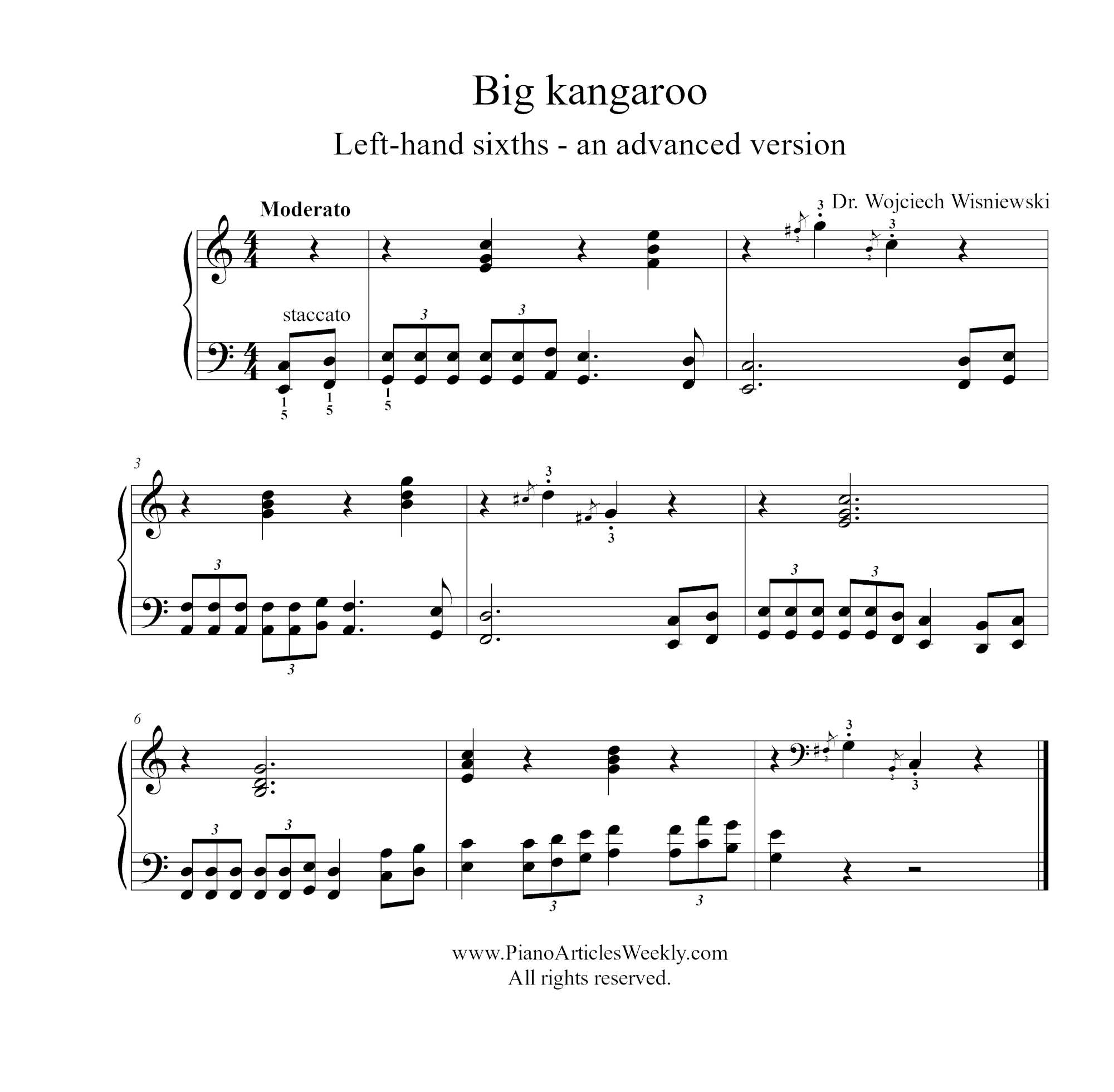
‘Big kangaroo’ – left-hand octave technique exercises
Below are the final three versions of the ‘Big kangaroo’ etude, including octaves of various difficulties.
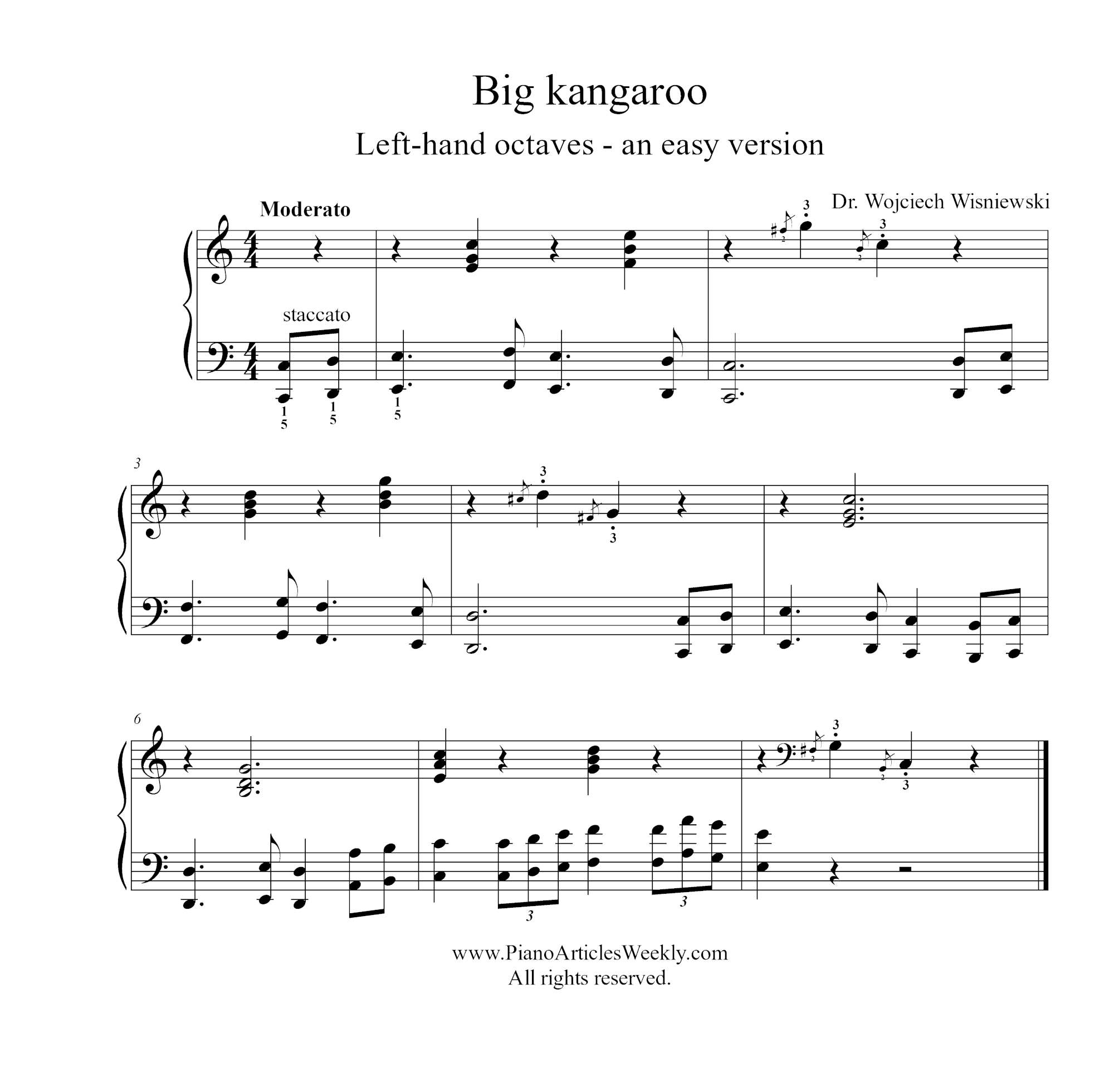
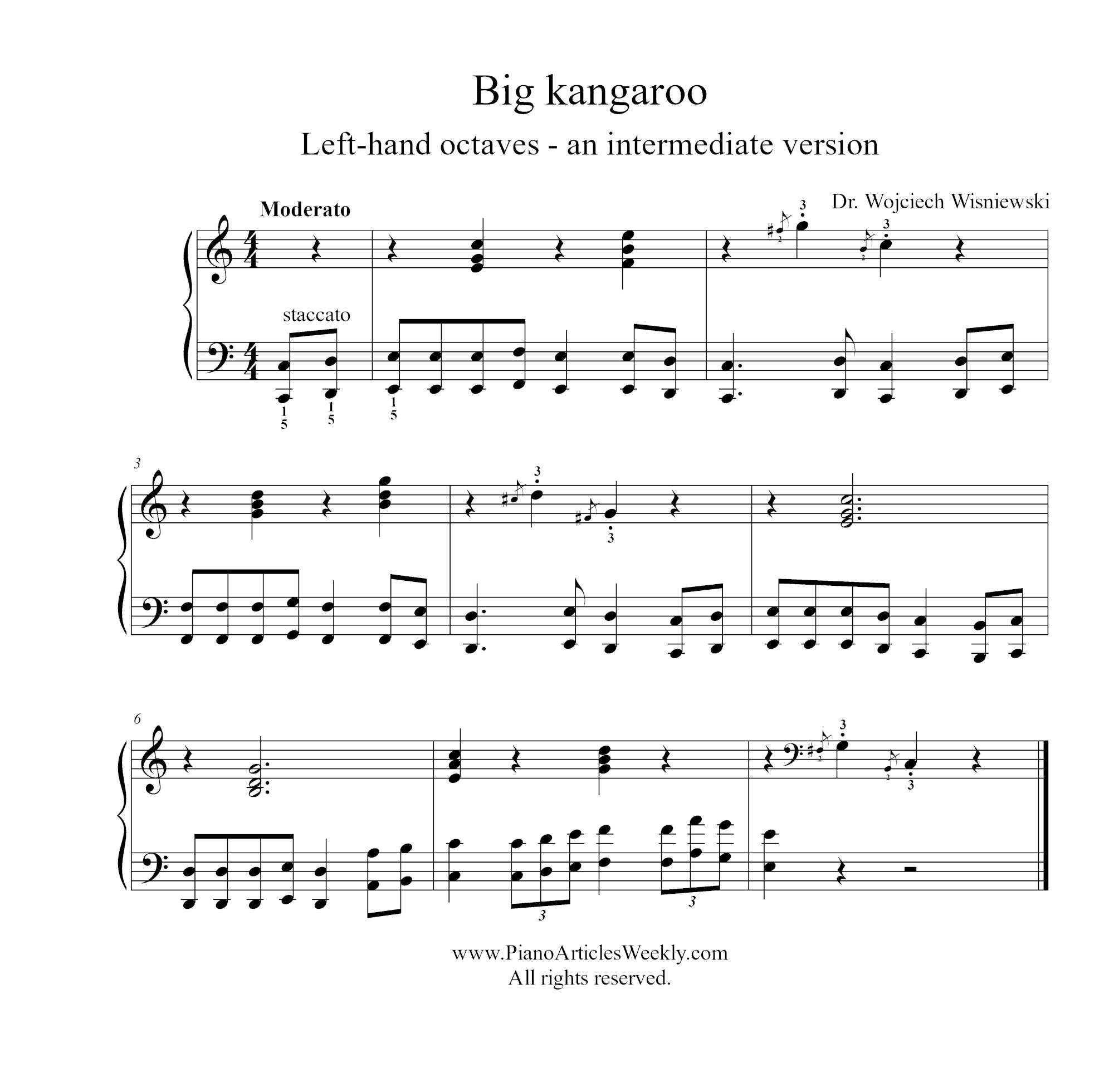

Conclusions
In the next few weeks, I will upload a YouTube video with all versions of the ‘Kangaroo’ etudes performed. This should complete this article on the piano octave technique for small hands.
For now, you can download the printable versions of all etudes using the links below:
‘Little kangaroo’ right-hand octave technique exercises – free pdf download:
Octaves – intermediate version
‘Big kangaroo’ left-hand octave technique exercises – free pdf download:
Octaves – intermediate version
They are free to use for your practice and teaching. Happy practising and teaching everyone!

This is very helpful for me to practice pieces with many octave passages since my hands are quite small. Thanks so much for your kindness to share this! Keep up the good works 👍